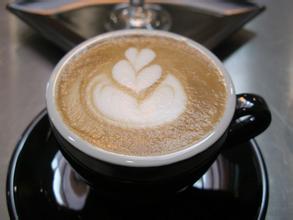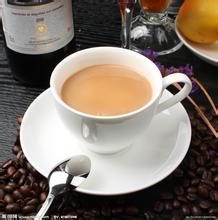Characteristics of Hawaiian Coffee Variety producing area introduction of Fine Coffee Bean Flavor Manor
Real Hawaiian Kona coffee gives you a unique pleasure and leads you slowly into the transcendent state of coffee tasting. And this is all from the oldest Arabica coffee tree.
Hawaii is the only state in the United States to grow coffee, which is grown on the five main islands of the Hawaiian archipelago: Oahu, Hawaii, Maui, Kauai and Mauroka. Coffee produced on different islands also has its own characteristics. Coffee from Kauai is soft and smooth, coffee from Mauroka is high in alcohol and low in acidity, and coffee from Maui is medium in acidity but has the strongest flavor. Hawaiians are proud of their 100% indigenous Arabica coffee beans.
Hawaii is the largest island in the Hawaiian Islands, so it is also called the Big Island. Kona coffee is grown in the west and south of Kona area of Hawaii Island. Coffee trees are spread all over the slopes of Hualalai and Mauna Loa, which are 150 meters to 750 meters above sea level, which is suitable for coffee growth.
The excellent quality of Kona coffee is due to its location and climate. Coffee trees grow on the slopes of volcanoes, and their geographical location ensures the altitude required for coffee growth; the dark volcanic ash soil provides the minerals needed for coffee growth; the climatic conditions are very suitable, and the sun gently passes through the air filled with moisture in the morning. In the afternoon, the mountains become more humid and foggy, and the clouds in the air are natural umbrellas for coffee trees. At night, they become clear and cool, but no frost falls. Natural conditions allow for high average yields of 2240 kg/ha compared to 600 - 900 kg/ha in Latin America
Hawaii Kona coffee beans have the most perfect appearance, its country is unusually full, and shiny, is the world's most beautiful coffee beans. The coffee is soft and rich, with an attractive nutty flavor, balanced acidity, as charming as the colorful colors of Hawaii and a long finish.
The world famous "Hawaii Kona" is mellow and sour coffee beans.
Kona coffee is grown on the slopes of Mauna Loa volcano on the southwest coast of Hawaii. In terms of flavor, Kona coffee beans are closer to Central American coffee than Indonesian coffee. It is of high average quality, carefully prepared, medium texture, good acidity, very rich flavor, and fresh Kona coffee is extremely fragrant. If you think your coffee is too thick, African too sour, or Central American too rough, Kona may be for you. Kona is like a girl walking in the Hawaiian sun and breeze, fresh and natural.
Kona coffee beans are evenly shaped, with intense acidity and sweetness, and a smooth, moist taste. Because of its volcanic habitat and intensive cultivation, each bean is a pampered "lady," beautiful, plump, and baby-like skin-true kona coffee is a rare commodity and is hard to find. The best Kona coffees are divided into three categories: ExtraFancy, Fancy and NumberOne. This third-class coffee is produced both on the estate and under natural conditions. Most coffees on the market that call themselves Kona contain less than 5% real Hawaiian Kona coffee. Another good Hawaiian coffee can be found in the United States-Kai Farms. Although Hawaii is often affected by tornadoes, the climate conditions are very suitable for coffee farming. There is plenty of rain and sunshine here, and there is no worry about frost. In addition, there is a strange natural phenomenon called "free shade." On most days, around 2 p.m., white clouds appear in the sky, providing the coffee trees with the shade they need. In fact, it is the natural conditions that make Kona produce more Arabica coffee than any other plantation in the world, and maintain a high quality, unique growth and climate to create a stronger coffee flavor. For example, coffee yields 560- 900 kg/ha in Latin America and 2240 kg/ha in Kona.

Important Notice :
前街咖啡 FrontStreet Coffee has moved to new addredd:
FrontStreet Coffee Address: 315,Donghua East Road,GuangZhou
Tel:020 38364473
- Prev

Introduction to the Baking degree of Fine Coffee Bean Manor with the characteristics of Colombian Coffee Variety producing area
In 1501, the Spaniard R.de Bastidas first reached the northern coast of Colombia and founded the city of Santa Marta in 1525. In 1533, P.de Eredia established Cartagena. In 1535, G. Simone de Xada led the Spanish colonial army into the interior of Colombia, conquered the Chibucha, established the city of Bogota, and Colombia became a Spanish colony. At the beginning
- Next

Introduction to the Flavor description Manor of High-quality Coffee beans in Costa Rican Coffee Variety producing area
Citizen Action Party (Partido Accin Ciudadana): Colombia's second largest political party, opposition party. Founded by Ottn Sols Fallas in December 2000, most of its supporters are urban middle class. After the establishment of the party, its strength grew rapidly, which changed the situation that the party of the democratic liberation party and the Christian social organization party took turns in power for a long time. The party actively promotes the public
Related
- Detailed explanation of Jadeite planting Land in Panamanian Jadeite Manor introduction to the grading system of Jadeite competitive bidding, Red bid, Green bid and Rose Summer
- Story of Coffee planting in Brenka region of Costa Rica Stonehenge Manor anaerobic heavy honey treatment of flavor mouth
- What's on the barrel of Blue Mountain Coffee beans?
- Can American coffee also pull flowers? How to use hot American style to pull out a good-looking pattern?
- Can you make a cold extract with coffee beans? What is the right proportion for cold-extracted coffee formula?
- Indonesian PWN Gold Mandrine Coffee Origin Features Flavor How to Chong? Mandolin coffee is American.
- A brief introduction to the flavor characteristics of Brazilian yellow bourbon coffee beans
- What is the effect of different water quality on the flavor of cold-extracted coffee? What kind of water is best for brewing coffee?
- Why do you think of Rose Summer whenever you mention Panamanian coffee?
- Introduction to the characteristics of authentic blue mountain coffee bean producing areas? What is the CIB Coffee Authority in Jamaica?

